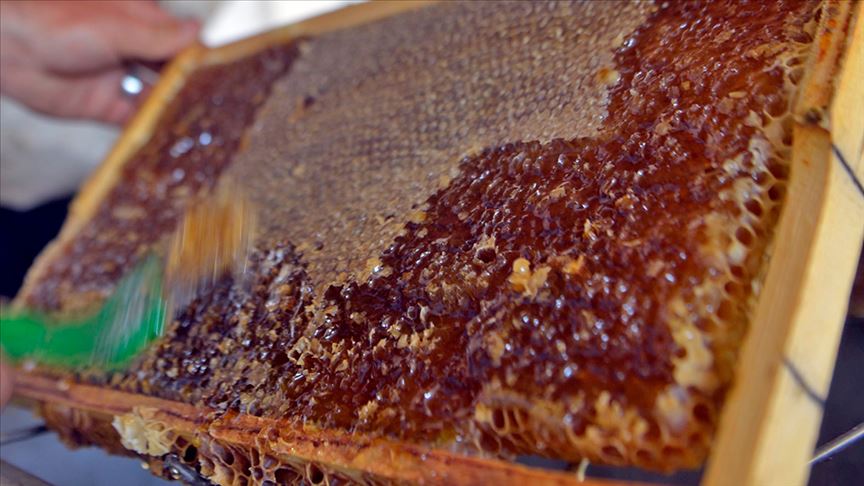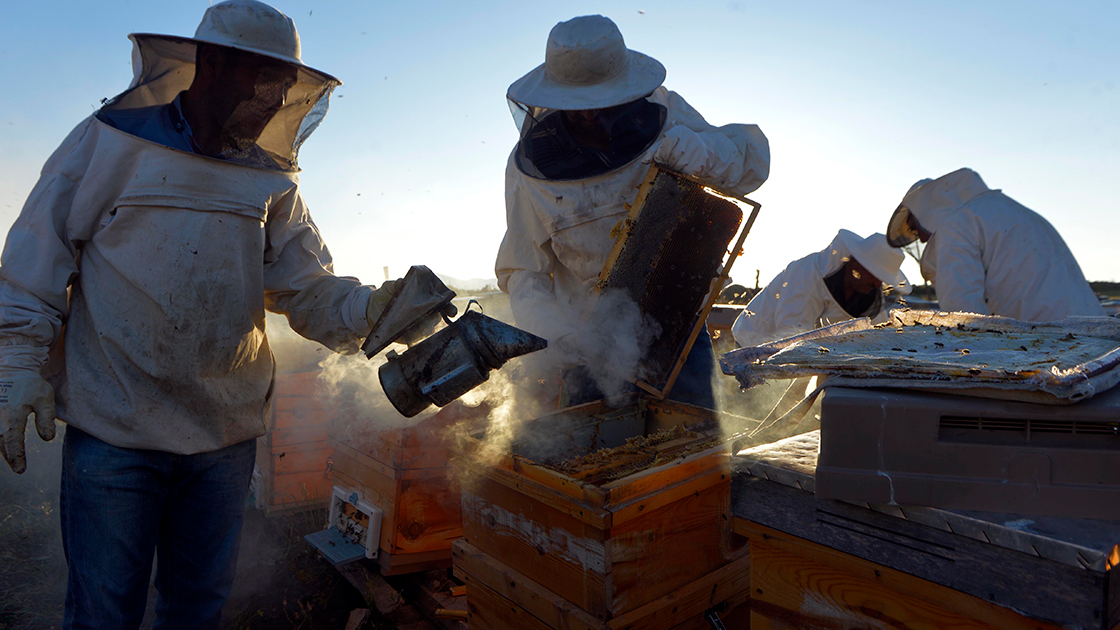Ardahan wildflower honey is a high-quality type of monofloral and polyfloral honey produced in the Ardahan province, located in the northeastern part of Türkiye. The region’s high altitude, rich flora, and unspoiled nature make Ardahan wildflower honey stand out in terms of both its physico-chemical properties and biological value. Ardahan wildflower honey is notable for its low moisture content, high enzymatic activity, and rich aroma profile. Due to these characteristics, it is considered a valuable food product in both local consumption and commercial markets.

Ardahan Wildflower Honey (AA)
Geographical and Climatic Conditions
Ardahan is situated in a transitional zone between Eastern Anatolia and the Black Sea regions, with an average altitude exceeding 1800 meters. As part of the Caucasus ecological region, Ardahan is distinguished by its long, harsh winters and short but flower-rich summer season. These climatic conditions directly affect the nectar production of melliferous plants, enabling the production of high-quality honey.
Varieties of Ardahan Wildflower Honey
The honey produced in Ardahan is mostly of polyfloral origin, meaning nectar is collected from multiple plant species. Common nectar sources in the region include Trifolium spp. (clover), Lotus corniculatus (bird’s-foot trefoil), Rosa canina (wild rose), Centaurea species (cornflower), Astragalus species (milk vetch), and Thymus species (thyme). This diversity gives Ardahan honey its characteristically rich aroma and high antioxidant capacity.
Production Process
Ardahan wildflower honey is produced using traditional methods based on stationary beekeeping. The production process involves multi-stage activities throughout the year, with the region-specific Caucasian honeybee (Apis mellifera caucasica) playing a central role. This bee breed, with its long proboscis, is highly efficient at collecting nectar from Ardahan's deep-tubed flowers and is able to work even in low temperatures.
Beekeeping activities generally begin toward the end of spring. The hives, mostly of the Langstroth type, are manufactured from Scotch pine wood to suit the region. These hives are placed in fixed beekeeping zones designated by the Ardahan Governorship or on the producers’ own land. Throughout the summer, bees collect nectar and pollen from the region’s rich flora. As no chemical fertilizers or pesticides are used during this period, the honey produced is natural, residue-free, and organic.
Honey extraction takes place between the end of July and the beginning of August. No heat treatment is applied when obtaining strained honey, which helps preserve its natural enzymes, vitamins, and antioxidant components. The strained honey usually begins to crystallize within a few months, forming a homogeneous, cream-like texture.

Ardahan Wildflower Honey Production (AA)
Due to Ardahan’s long winter conditions, bees begin to prepare for winter in the fall. During this period, beekeepers are advised to feed the colonies with syrup and pollen substitute feed. This support helps colonies enter spring with a strong population. Wintering is either done in closed, moisture-free, and ventilated winter shelters in Ardahan or in the microclimatic zones of Artvin, which have a milder climate. In both cases, bees are ensured a stress-free winter in a stable temperature and quiet environment. To preserve the Caucasian bee, Ardahan has been declared an isolated region. Entry of external bees is prohibited, thus maintaining genetic purity and the local beekeeping structure. These practices not only enhance the quality of Ardahan wildflower honey but also secure its regional authenticity.
Nutritional Value and Benefits
Ardahan wildflower honey is characterized by its low moisture content (16–18%), high fructose-glucose ratio, and high enzymatic activity (with a high diastase number). These properties make it both durable and easy to digest. Its high antioxidant content supports the immune system, while its antibacterial properties allow for its use in traditional remedies.

Ardahan Wildflower Honey (AA)
Trade and Economic Importance
Ardahan wildflower honey has gained value in both local markets and national/international markets thanks to its geographical indication registration. With the growing demand for organic products, Ardahan honey has become an important source of income for regional beekeepers through the branding process. Through cooperatives and controlled production, quality standards have been improved, and export potential has been increased.
Protection and Sustainability
The future of Ardahan wildflower honey depends on nature conservation and conscious beekeeping practices. Measures such as preserving the region's floristic diversity and limiting the use of pesticides and agricultural chemicals directly affect honey quality. Additionally, applications like geographical indication and organic certification are important for sustainability as they help inform consumers and guide producers.


